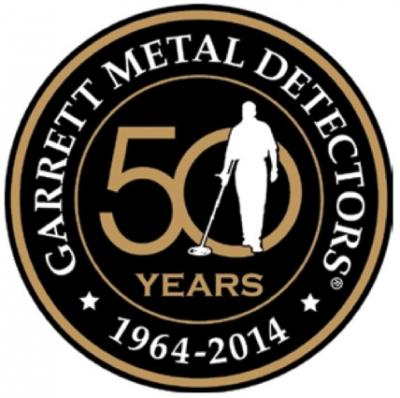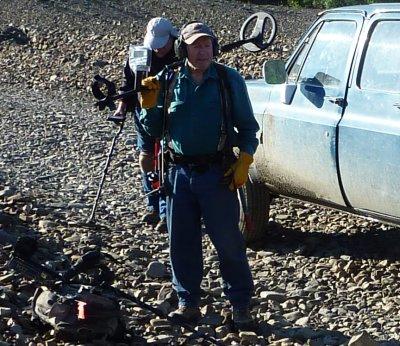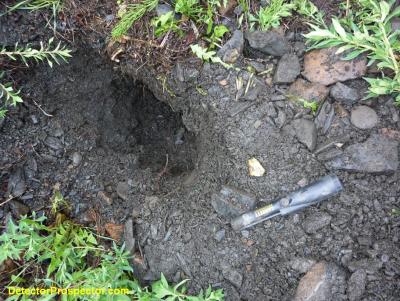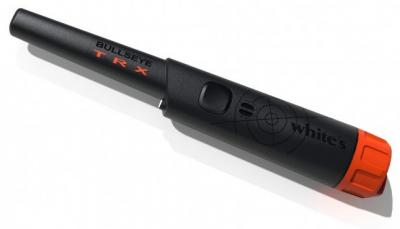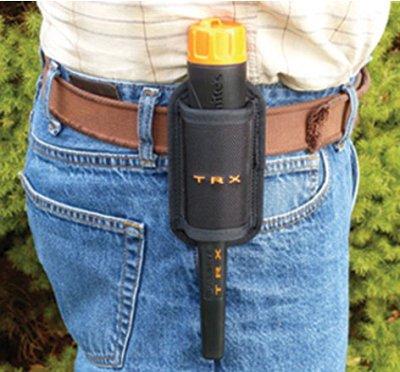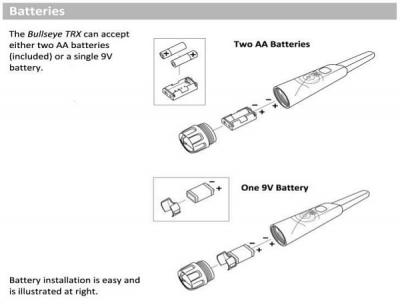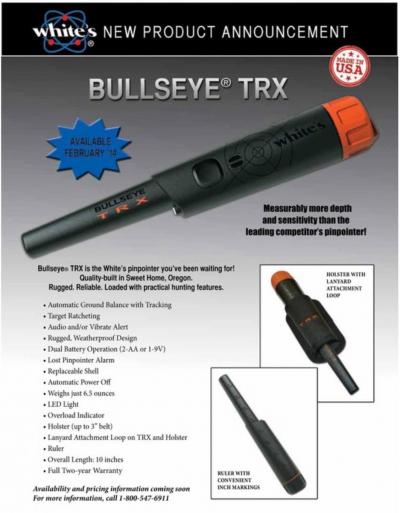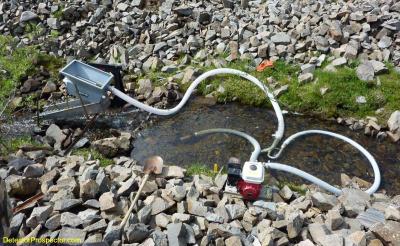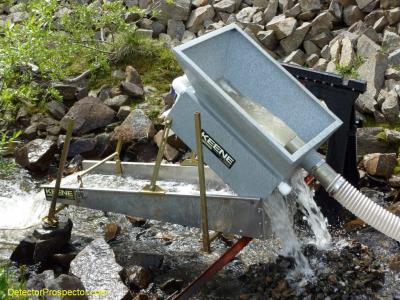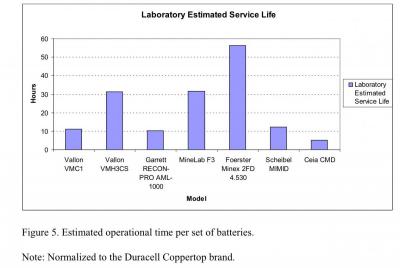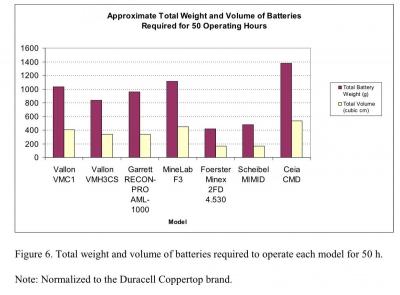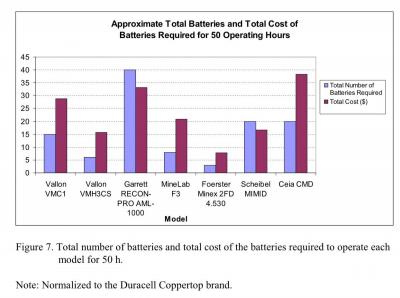-
Posts
19,773 -
Joined
Content Type
Forums
Detector Prospector Home
Detector Database
Downloads
Everything posted by Steve Herschbach
-
I suspect they have good accountants now. They can claim that as legal tender it is all face value until sold. Some of those coins it is impossible to determine the value until sold at auction. Regardless, extensions filed mean they do not even have to file a tax return for 2013 until October so they have lots of time to get it figured out. We all can only wish to have problems like that.
-

Gold Bug Pro Coil Question
Steve Herschbach replied to El Dorado's topic in First Texas - Bounty Hunter, Fisher & Teknetics
Hi Ray, I agree the 5" x 10" DD is the best overall coil for the Gold Bug Pro. If hunting tailing piles I would use the 7" x 11" DD for that tiny extra on a big nugget since I own one but can't say the difference is enough that people should run out and get one. There seems to be a lot of vague posting going on about aftermarket coils and modifications on other forums. I would be extremely skeptical of any claims that anyone can modify the guts of a Gold Bug Pro for better performance. There are a bunch of aftermarket coils that basically work on the Gold Bug Pro. The problem is getting anyone with actual real world use to post about them. Most reports are second hand. Ray has some time on one. I have the Ultimate 13" which I think is a good coil but no magic bullet. You hit the nail on the head though Ray - trying to turn VLF detectors into PI detectors with larger coils rarely works in anything other than low mineral soil. Money spent on a VLF detector that has a large coil by getting a smaller coil for it is money well spent. Spending money on oversize coils rarely pays off in anything but better ground coverage. I do know this. Fisher makes coils that are specific to the F75 and they make coils that are specific to the Gold Bug series. They do not advertise one as being good for the other. This tells me getting optimum performance for either detector takes a coil specifically tuned for its frequency, 13 kHz on the F75 and 19 kHz on the Gold Bugs. An F75 coil will work on a Gold Bug Pro but the results have been specifically noted by Fisher as being unreliable and you do so at your own risk. I think aftermarket manufacturers that advertise their F75 coils as working on the Gold Bugs are fudging. Yes, they will work. But how well will they work? I think the evidence as presented by Fisher says it all and if you buy an aftermarket F75 and slap it on a Gold Bug or Gold Bug Pro you are rolling the dice. It will work, but you may be spending money to get a larger, heavier coil that basically does no better than what you have. If anyone has FIRST HAND use of a specific coil model and can vouch otherwise I am all ears. This is the official statement from Lead Engineer Dave Johnson at First Texas: "The new Bug (and also Tek G2) are designed to work with the Tek "Greek series" (also known as "Frat Bros.") series DD searchcoils, which at this time (Nov 2010) consists of a 5 inch round and an 11 inch elliptical. Some people have gotten creative and plugged in other searchcoils from the FratBros and F75 series just to find out what happens. Results have been mixed. Because of manufacturing variation in searchcoils some individual ones of a particular type may "work" and others may not work. The ones that "work" may in fact exhibit subtle performance deficiencies, or may seem to work fine today but not tomorrow. FTP-Fisher explicitly un-recommends that people purchase anything other than searchcoils specified for use with these units. But if you have one of our other searchcoils anyway, there's nothing to stop you from plugging it in just to see what happens. It won't damage the machine. Note however that Tek T2 searchcoils flat out won't work, they're wired different." -
2014 marks the Golden Anniversary (50 years) of Garrett Electronics, one of the most respected names in the metal detector industry. There is a very detailed company history online. I admit to never being a Garrett fan early on. My interest in prospecting with metal detectors grew right about the time other companies were supplanting Garrett as an early leader in the prospecting field. They developed a legendary early 15 kHz circuit, the Garrett Groundhog, but then sat on it forever. To this day the Garrett Stinger is basically a Groundhog in a different box. The first Garrett detector to get my attention was the Infinium, which is still the bang-for-the-buck entry in the ground balancing pulse induction field. While it never did offer Minelab serious competition it found its own niche as a relic and beach detector and even with a few prospectors. The machine that really set the detecting world on its ear was the Garrett Ace with the Garrett Ace 250 setting a new standard for what a low price metal detector should offer. It compares favorably with detectors costing twice as much. The Ace series seemed to set a new direction for Garrett in producing detectors that offer very high performance and feature lists at very reasonable prices. The Garrett AT Pro and AT Gold are both remarkable waterproof detectors that offer all the features one expects of a dry land detector in a waterproof package with no weight or price penalty to be paid. Finally, the new Garrett ATX represents Garrett's entry into the high end detector arena. It has the odd distinction of being a higher price detector that still seems to offer great performance and features at a reasonable price. So I say congratulations to the Garrett family for making your mark in the metal detecting world and for 50 years of achievement! The Winter 2014 issue of the Garrett Searcher newsletter has just come out and can be downloaded here. Back issues all the way back to 2001 can be found at the Garrett Searcher Archives.
-
There were amazing finds made at Ganes Creek, Alaska in the early years of the pay-to-mine operation there. One of the early visitors in 2004 was Steve Burris of Idaho. Steve was hunting downstream of the airstrip in an area well known to have produced large nuggets in the old mining days. His Gold Bug 2 screamed as loud as a Gold Bug can scream, and when he looked down a dust covered yellowish rock lay at his feet. It was a huge gold nugget weighing 33.85 ounces, and to my knowledge it is to this day the largest gold nugget* ever found in Alaska with a metal detector, though the 32.2 ounce nugget found at Moore Creek may have had more actual gold content. The backside of this nugget is actually mostly quartz showing. Still, a very spectacular find. Here is a photo I took of the nugget in my hand when Steve was kind enough to bring it by the shop to show to me. It is the best photo I have seen of the nugget and I do not think I have ever posted it before. Heart of Gold found by Steve Burris of Idaho at Ganes Creek, Alaska Steve named the nugget the Heart of Gold due to its shape when looked at right and the fact he had open heart surgery not long before visiting Ganes Creek. Steve is a super nice guy and I had the pleasure of rooming with him and detecting on later Ganes Creek visits. Here is a photo of Steve during our visit to Ganes Creek in the last year of operation in 2012. He was swinging a Minelab X-Terra 705 that year that got him a 2.74 ounce nugget. Steve Burris at Ganes Creek, Alaska in 2012 Steve wrote a story for the ICMJ Prospecting & Mining Journal that was published in August 2004 and can be read online at http://www.icmj.com/article.php?id=1248 if you have an online subscription. *There have been several larger gold specimens found in Alaska with metal detectors but they were mostly quartz. See http://www.akmining.biz/mine/nuggets.htm
- 3 replies
-
- alaska
- amazing finds
-
(and 1 more)
Tagged with:
-
I like stories like this. A California couple is out walking their dog on their property and the wife decides to look at old rusty can eroding out of the ground. The can is full of gold coins! Several more cans are found and they end up containing 1,427 rare gold coins, dating from 1847 to 1894. All in more or less mint condition and worth a fortune. And all just over the hill from me in Northern California. I really am hot to find a gold coin one of these days; been on my bucket list for a long time, and I am finally someplace where the odds are pretty good. http://www.sfgate.com/bayarea/article/Gold-Country-couple-discovers-millions-in-buried-5266314.php?gfs http://www.kaginsinc.com/coins/?p=672 http://www.kaginsinc.com/coins/?p=678
-
Yes the Gold Bug 2 can find small gold but you have to be right on it. You have been asking about the Hatcher Pass area and large flake and pickers are not exactly common there. Flyspeck gold is more like it. It is not the detectors, it is the lack of detectable gold in the area that is going to frustrate you.
-
You can't detect color - you need little nuggets. Realistically if the creeks are your goal packing a pan or the sluice is going to be more effective. The stuff in the picture above is a challenge in low mineral ground and near impossible in hot mineralized ground. The MXT or GMT would be very instructive for you to borrow and use before buying anything. There is a bit of a myth going around that detectors are the easy way to find gold. Nothing could be farther from the truth. You can walk all over gold all day long with a detector a pan would reveal in minutes. And Hatcher Pass is the place for exactly that to happen. Not trying to discourage you but unrealistic expectations is a major reason people try detecting then give up on it. If Hatcher Pass were a great place to detect gold you can bet I would have done lots more of it!
-
The Gold Bug 2 is the one detector that I hardly think of as a detector. It is a prospecting tool. It does have a learning curve, but people like myself that have mastered the Gold Bug 2 consider it indispensable. Like anything else it just takes some practice. Do not be afraid to tone the settings down! If there is any thought at all of doing anything else other than prospect than a Gold Bug Pro could be the better answer. Most mid-frequency detectors are all around units that you can also use for prospecting. The Gold Bug Pro is like a prospecting detector you can use for other stuff, if you get my drift.
-

Metal Detector Set Off By Pinpointer
Steve Herschbach replied to fredmason's topic in Metal Detector Advice & Comparisons
Holy #%&@! Good for Bob. That's a monster!! -

White's TDI Testing Results
Steve Herschbach replied to Rick Watkins's topic in White's Metal Detectors
Very nice Rick! Thanks for posting. I like the bullets and casings also. You know as long as you are finding that stuff the area has not been detected very well. Digging bullets can be annoying but it is not as annoying as being someplace you can't find any because somebody else dug them all along with the gold. -

Metal Detector Set Off By Pinpointer
Steve Herschbach replied to fredmason's topic in Metal Detector Advice & Comparisons
Hi JP, I will have all three so will put that to the test. I have been using my Garret Pro Pointer out of habit but will switch to the Pro Find in a heartbeat if true. Thanks for that tip! -

Metal Detector Set Off By Pinpointer
Steve Herschbach replied to fredmason's topic in Metal Detector Advice & Comparisons
Metal detectors like items with holes in the middle, because the eddy current runs in a circle like on a little racetrack. Metal detector search coils are specially designed to carry current in circles. The little coil winding in a pinpointer is accidentally one of the most detectable items you can lay hands on. It has nothing to do with it being on or off unfortunately. I was using my pinpointer yesterday with my DFX and even with a VLF you need to be aware of this. I was running in all metal and the detector was signaling a bit on each left swing until I moved the pinpointer back on my belt. I will have to design a hat with a pinpointer holder on the back and get big bucks on Shark Tank for my brilliant invention! -

White's TDI Testing Results
Steve Herschbach replied to Rick Watkins's topic in White's Metal Detectors
Excellent Rick! Always good to find gold, and sure helps with faith in a new detector. Lots of people get a new machine and if gold is not found soon lose all faith in it and it ends up for sale. Not the machines fault of course but just the way people often are. So I am glad the TDI is working out for you. Hope we get to see pictures at some point! Thanks again for the invite. Wish I could have but family stuff is getting priority at the moment. -
Well, true story is I had big plans to chase small gold with the GPX but the fact is I could not tear myself away from looking for big gold long enough to do it. It seems a bit like hunting mice with an elephant gun. That said I think it would be worth your while to give it a go. You really never know unless you try and you already have the detector. Nice photos, thanks for posting! The Hatcher Pass area was always a favorite of mine. Very kind offer you made also.
-

New White's Bullseye Trx Pinpointer
Steve Herschbach replied to Steve Herschbach's topic in White's Metal Detectors
Hi Fred, A quick push of the button "grabs" the ground balance. You can't turn the tracking off but remember this is not a classic metal detector and chances are you do not want to turn it off anyway. Tracking out targets is not likely to be an issue so no reason. Ratcheting is the practice of getting near the target, pressing the pinpoint button on a detector to reset signal, and then getting a sharper pinpoint signal. You ratchet the signal down until right on target. This can be done with the TRX but is probably not necessary in most cases. I never park hunt without a pinpointer. It ups my efficiency level ten-fold. You do not need a pinpointer nugget detecting per se but I always have one along with my GPX 5000 and a big coil. I still get tricked on elongated trash targets a lot and find I am digging just off target. The pinpointer has saved me digging to China many times locating a nail in the side of the hole. I also use the pinpointer if I am approaching any large target in the bottom of a deep hole. The pinpointer lets me know I am close and might save putting a pick tip into a very valuable nugget or specimen. Pinpointers are usually of less use on small stuff but the TRX may help in that regard. It may make a neat little crevice tool but jury is out. White's is claiming to beat out the Garrett and Minelab pinpointers though not by name of course. We will see. The photo below is of a 1.26 oz nugget I found with the aid of the Garrett Pro Pointer while using my GPX. I carry the pinpointer in my rucksack that gets stashed nearby while detecting because a pinpointer is scientifically designed to set a large coil off at maximum distance. If I keep it in my back pocket it is ok but just barely. -
Well, this has been a long time in the making. White's is finally shipping their long awaited new pinpointer, the Bullseye TRX. It looks very promising indeed - automatic ground balance with tracking, in a pinpointer? Wow! Shipping now to dealers. The ground balance feature means this has the potential to be the pinpointer prospectors have been waiting for. I will get one ASAP, give it a spin, and report back. Highlights 12 kHz operating frequency Audio and/or Vibrate Alert Automatic Ground Balance with Tracking Automatic Power Off Alternate Battery Operation (2-AA or 1-9V) Up to 20 hours on two AA batteries or a single 9-Volt battery Built in LED Light Lost Pinpointer Alarm Overload Indicator Replaceable Shell Rugged, Weatherproof Design Ruler, with Inch Markings Simple, One-Button Operation Target Ratcheting Holster (up to 3” belt) Lanyard Attachment Loop on TRX and Holster 10" overall length 6.5 oz / 185 grams with two AA batteries Full Two-year Warranty MSRP $159.95 Manufacturer website page http://www.whiteselectronics.com/bullseye-trx-pinpointer
-

An ATX Proposal
Steve Herschbach replied to Rick K - First Member's topic in Garrett Metal Detectors
Hi John, Do not worry about it - really not a big deal. This thread got me deciding to try and duplicate Paul's light-weight rod and 10" Infinium DD combo. -
I was involved in some validity exam testing on some mining claims in Alaska a few years ago. Short story is samples had to be taken at various locations to prove the claims have paying quantities of gold. Any claims not passing the exam would be lost. This photo was taken on Skookum Gulch in the Wrangell Mountains of Alaska. It is a small short drainage but was very rich at one time. It was mined out by hand as the stacked rocks reveal but some gold still remains. In this case we used a Keene 175-30 highbanker / dredge combo for the test work. The creek is very small and so had to be ponded up for the system to work, and it used nearly all the water in the creek while operating. The little gulch almost goes dry later in the season. One interesting note is that we left the highbanker stored upright over the winter. Water entered the tops of the leveling legs, which are hollow steel tubes with feet welded on the bottom. The water froze over the winter, and because the legs were stowed in there shortest configuration it proved impossible to extend a couple of them. And believe me there was a lot of squeezing in a vice and pounding of hammers involved! The metal had warped out to the point it was impossible to squash back down small enough to pass through the bracket hole. We just gave up and jury rigged this little saw horse and fence post system you see here. The legs were later replaced and drain holes drilled at the bottom of all the legs to allow them to drain in the future to prevent this from happening. The amount of gold found was marginal and last I heard the disposition of this particular claim was in question. It was a fun project though and a nice photo of how a highbanker / dredge combo can be put to use.
-

Video About Gold Detecting In Africa
Steve Herschbach replied to Steve Herschbach's topic in Detector Prospector Forum
Well yeah, the stuff is all staged for the cameras. Been there, done that! It is not a Minelab thing, it is a camera crew thing. "Ok, you stand over here and look this way. You guys, you wander around back here with metal detectors. Look like you are trying to find gold. Don't look at the camera!" Film crews cost bucks so they do not just stand around waiting for fate to provide good footage. Still interesting though - I was more interested in the factoids than the footage though seeing the diggings was interesting. -

An ATX Proposal
Steve Herschbach replied to Rick K - First Member's topic in Garrett Metal Detectors
Hi John, I hope your heart troubles are treatable and under control. Health is everything. Garrett at http://www.garrett.com/cmerwsite/recon_pro_aml_1000_tech_specs.aspx quotes the Recon at 14-16 hours but of course that is manufacturer best case stuff. The military did a study at http://www.arl.army.mil/arlreports/2010/ARL-TR-5282.pdf comparing battery life on several demining detectors. The Garrett Recon-Pro AML-1000 comes in at about 10 hours in the study which is about what I have experienced with rechargeables, alkalines should get closer to Garrett's figure. Interesting to note in the study of all the detectors the AML-1000 fared the worst as taking the most batteries at the highest cost to operate for 50 hours. Long story short the AML-1000 and ATX appear to have about the same battery life. However, battery life is a poor indication if any indication at all of detector capability. I have never used the AML-1000 but have no reason to believe that in non-motion mode the detectors are roughly the same for depth of detection. My ATX has very little useable extra depth in non-motion mode, if any. All I can tell you from personal experience is this. The Garrett ATX is a very good ground balancing pulse induction metal detector. It has become one of my key units and I very much look forward to getting out and using it. The weight for dry land detecting will be an issue for most people and I highly recommend using a harness. But weight aside it is an excellent detector circuit that runs more like a VLF than a PI. It has excellent EMI resistance and a steady, well modulated audio response. The tones and modulated audio allow for a great degree of audio discrimination capability for those inclined to hunting by ear. I am not trying to sell you on the ATX but it is a detector worth consideration for those who truly understand the benefits and downsides to pulse induction detecting. It is because it is such a good detector that I keep harping on Garrett producing a lighter weight version. If it was mediocre I would not care. -
The Hatcher Pass and Sutton area is very mineralized as regards metal detectors. The high mountain areas are composed of granitic type rocks, granodiorite and tonalite in the immediate Hatchet Pass area, and monzonite above Sutton. Hot metal detectors like the Gold Bug 2 must be dialed way back to deal with the rock. Also, the gold is small. Very difficult detecting scenario. All my success in the area came from hand scanning hand picked quartz specimens, neatly side-stepping the issue. See Metal Detecting Lode Gold at Hatcher Pass, Alaska. I found the detectors to be of considerable aid in checking quartz specimens but I think the area would be very difficult to detect successfully in the classic sense of just scanning the ground for targets. The only creek in the area with nugget gold is Grubstake Gulch and it is completely claimed up. The Little Su, Willow Creek, and others have gold but it is small stuff. A Gold Bug 2 would hit it if you got on it, but would also go nuts on the rocks. A lower frequency VLF detector backed way down or a hot PI might deal with the rocks but then be unable to detect the gold. My method for checking potential quartz obviously worked but beyond that I would consider the area to be a very challenging scenario for metal detecting with a low potential for classic nugget detecting success. The main problem is simple - a general lack of gold nuggets! Honestly, a gold pan is probably a better tool for finding gold in the area than a detector unless you are chasing ore samples like I did. Ray, R.G., 1954, Geology and Ore Deposits of the Willow Creek Mining District, Alaska: U.S. Geological Survey Bulletin 1004, 86 p., 9 maps http://www.dggs.alaska.gov/pubs/id/3460

